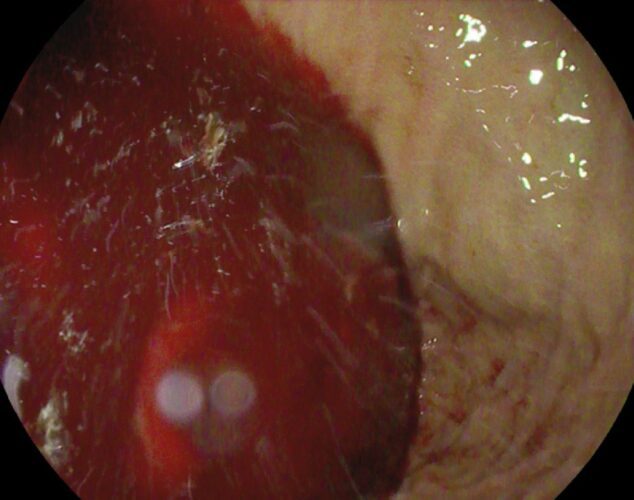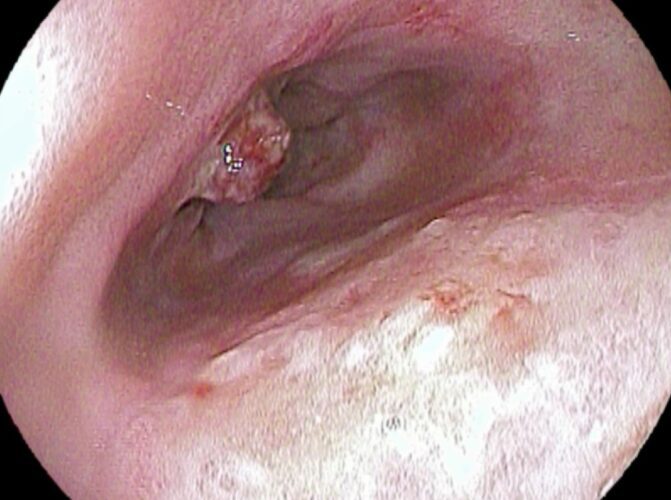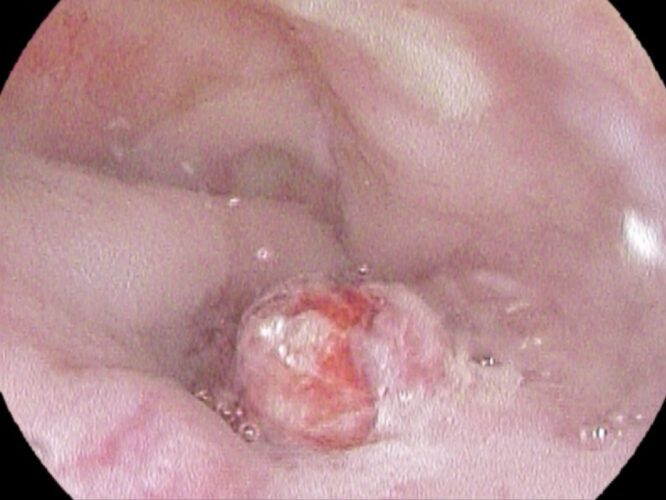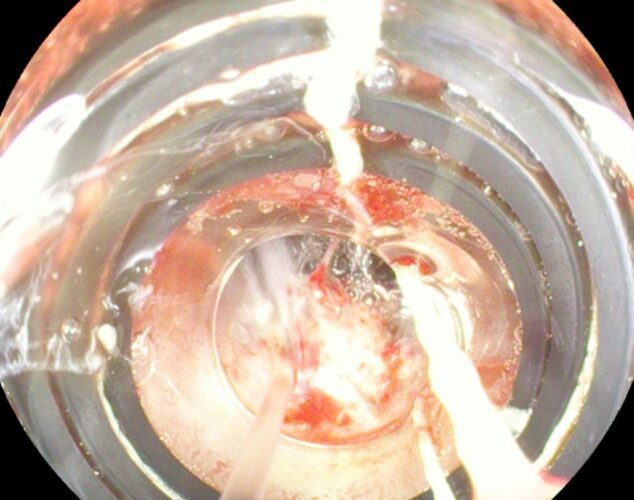Case 9: A 52-Year-Old Woman with Decompensated Cirrhosis
This 52-year old woman with decompensated alcohol-associated liver cirrhosis presents to the emergency department with a one day history of coffee-ground emesis, melena, and abdominal pain. Her hemoglobin is noted to have dropped to 84 from 118 one month prior. She reports that two weeks ago, she had similar symptoms and presented to a hospital in the community, where she was found to have variceal bleeding, which was treated with endoscopic band ligation.
While being assessed in the emergency department, she begins having frank hematemesis. An emergent EGD is performed, which reveals the following. What is the underlying diagnosis?






Based on the endoscopic observations and the patient’s clinical history of decompensated cirrhosis with recent endoscopic band ligation (EBL), it is evident that the bleeding in this case is a consequence of post-banding ulcers.
After undergoing endoscopic banding, an ulcer develops once the ligation band detaches, which can potentially bleed. The occurrence of bleeding from post-banding ulcers is estimated to be around 5%, with a higher likelihood in patients undergoing urgent EBL (as seen in this case) compared to those undergoing prophylactic EBL. Bleeding usually manifests around an average of 11 days following banding.




Source: de Brito Nunes M, Knecht M, Wiest R, Bosch J, Berzigotti A. Predictors and management of post-banding ulcer bleeding in cirrhosis: A systematic review and meta-analysis. Liver Int. 2023;43(8):1644-1653. doi:10.1111/liv.15621. Available from https://pubmed.ncbi.nlm.nih.gov/37222256/
The patients bleeding was managed with repeat EBL, leading to a resolution of her symptoms and improvement in her anemia:

